
"Knowing her story saved my life": Twins suffer postpartum preeclampsia
 When Samantha Carlin Willis attended her first Ob/Gyn appointment, she was definitely an empowered patient when it came to preeclampsia awareness. Her identical twin sister, Ilana Carlin Dimbleby, had experienced postpartum preeclampsia following the delivery of her first baby at 37 weeks due to intrauterine growth restriction and breech positioning. Ilana then spent 5 days in the hospital as providers worked to get her postpartum blood pressure under control. She went home on an arsenal of medicines that she continued having to take for six months after delivery.
When Samantha Carlin Willis attended her first Ob/Gyn appointment, she was definitely an empowered patient when it came to preeclampsia awareness. Her identical twin sister, Ilana Carlin Dimbleby, had experienced postpartum preeclampsia following the delivery of her first baby at 37 weeks due to intrauterine growth restriction and breech positioning. Ilana then spent 5 days in the hospital as providers worked to get her postpartum blood pressure under control. She went home on an arsenal of medicines that she continued having to take for six months after delivery.
Their older sister Gabby (pictured with Samantha and Ilana on the right) had also been induced for preeclampsia in her pregnancy too, so the family knew that there was a definite familial history.
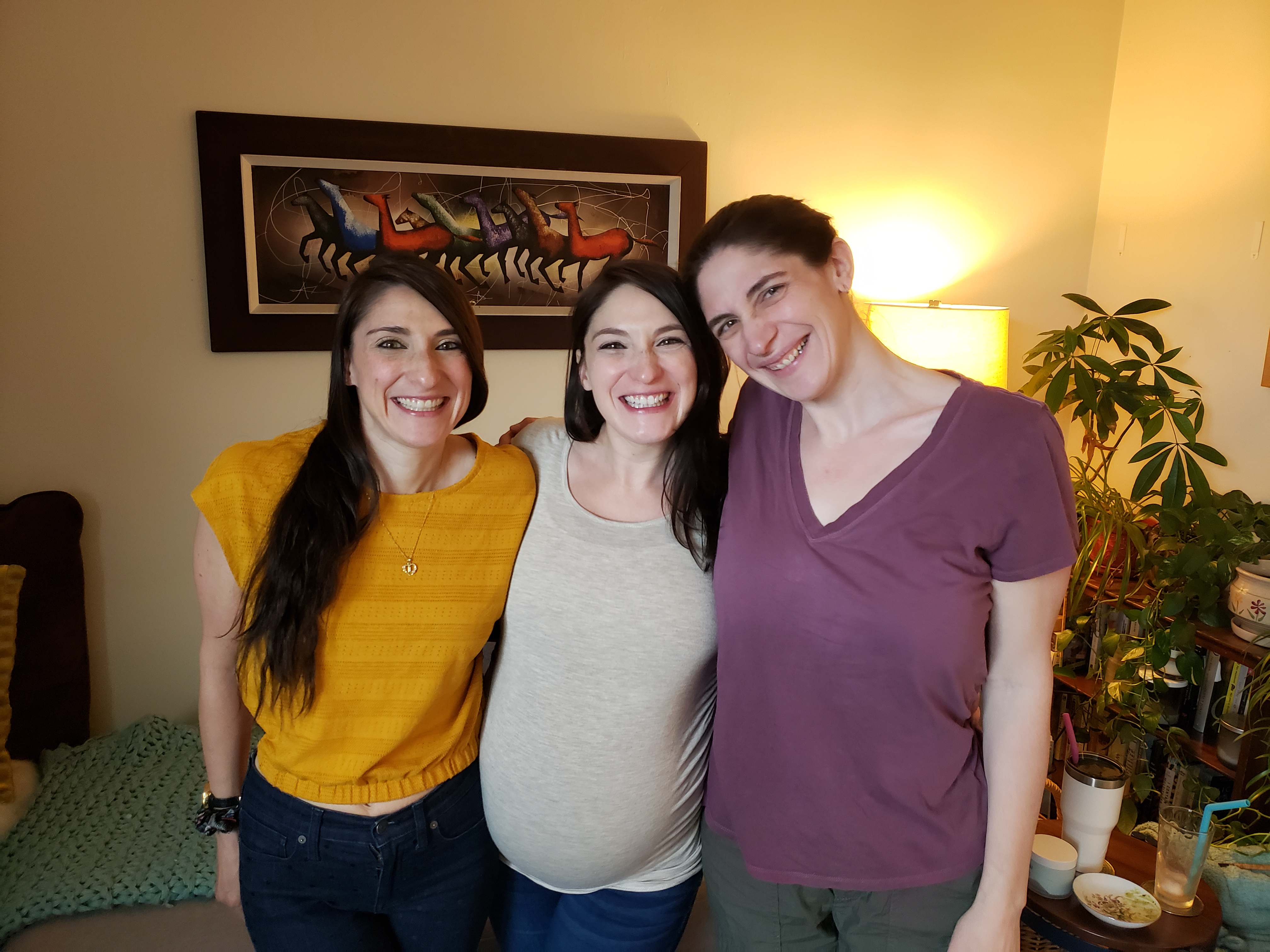 Ilana was six months pregnant with her second child when Samantha found out she was expecting too.
Ilana was six months pregnant with her second child when Samantha found out she was expecting too.
“I wanted Samantha to know that she needed to advocate for herself every step of the way – obstetricians are busy and you need to keep insisting on your own care, your family history, and speak up for yourself,” explained Ilana. “My own experiences felt like a roadmap for her.”
Ilana asked her provider what advice she’d have for Samantha’s pregnancy, given their family history – she recommended Samantha ask about aspirin.
“I went into my first Ob/Gyn appointment with the details of Ilana’s experience and her provider’s advice for me at the ready,” said Samantha. “My obstetrician decided that we’d monitor it as we went, but not to put me on aspirin.” Nevertheless, knowing Samantha made sure to stay active and self-monitor her blood pressure throughout the pregnancy. Because her own obstetrician had gone on maternity leave, Samantha had seen a rotation of different doctors throughout the pregnancy, so her concerns were not consistently heard.
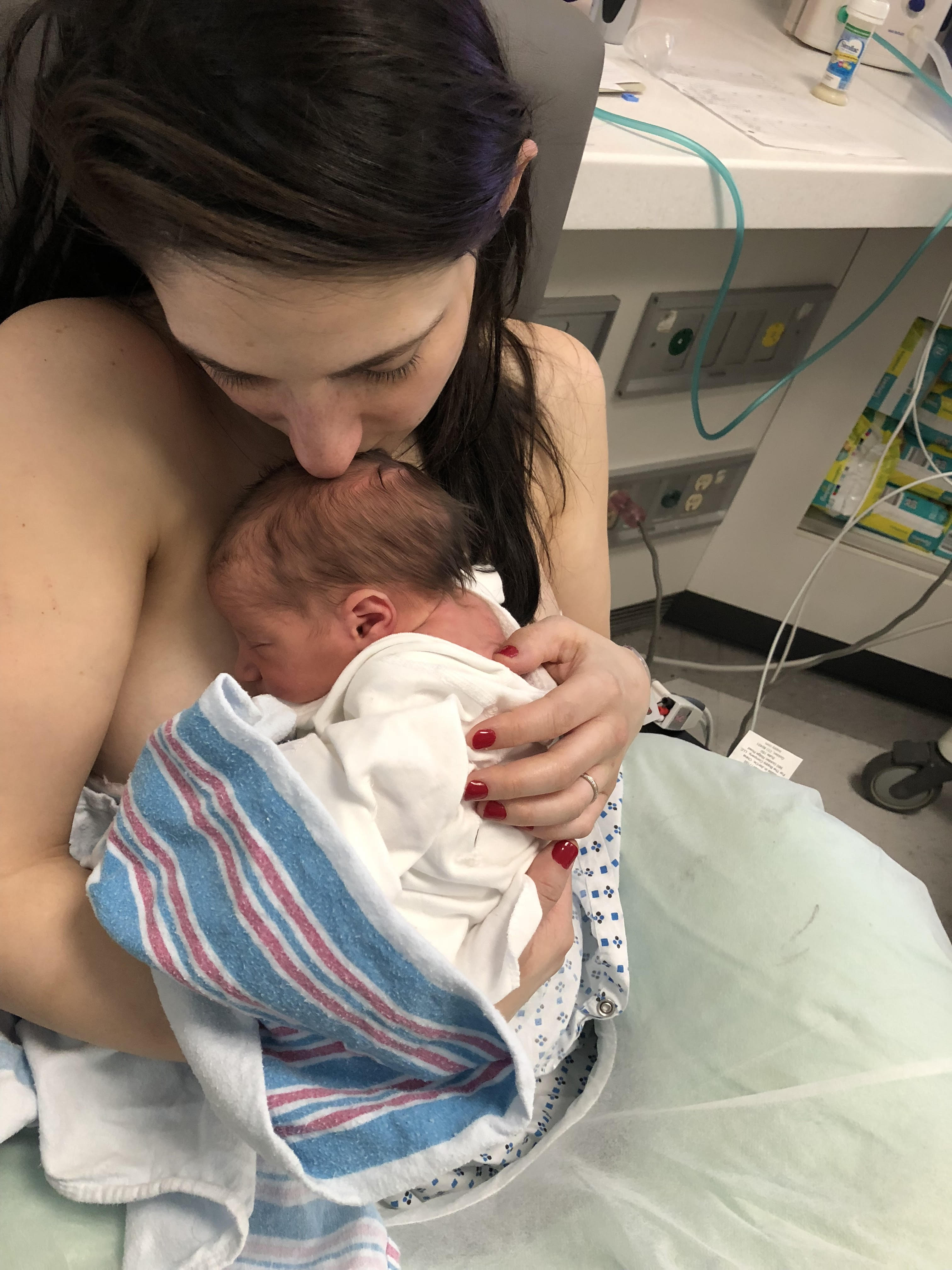 Ilana, who had been placed on aspirin therapy, delivered her second baby, a healthy baby girl at term. But like clockwork, her BP began to rise again after delivery. She spent another six days in the hospital as her providers worked to get her BP under control.
Ilana, who had been placed on aspirin therapy, delivered her second baby, a healthy baby girl at term. But like clockwork, her BP began to rise again after delivery. She spent another six days in the hospital as her providers worked to get her BP under control.
“I was discharged on the same battery of medications,” said Ilana. “After seeing a doctor a few times, we determined a good steady BP medication to stay on. This time, I’ve had to remain on BP meds, two years later.”
At Samantha’s 37 week appointment on a Thursday, her blood pressure was elevated and her care team wanted her to do a 24-hour urine collection to test for protein starting on Monday. When she went in on Monday to pick up the urine collection test, Samantha insisted the Ob see her.
Her blood pressure was elevated and there was protein in her urine. They needed to induce delivery immediately.
She delivered a healthy baby girl, Melody and everyone thought that perhaps they caught her preeclampsia in time to prevent postpartum complications.
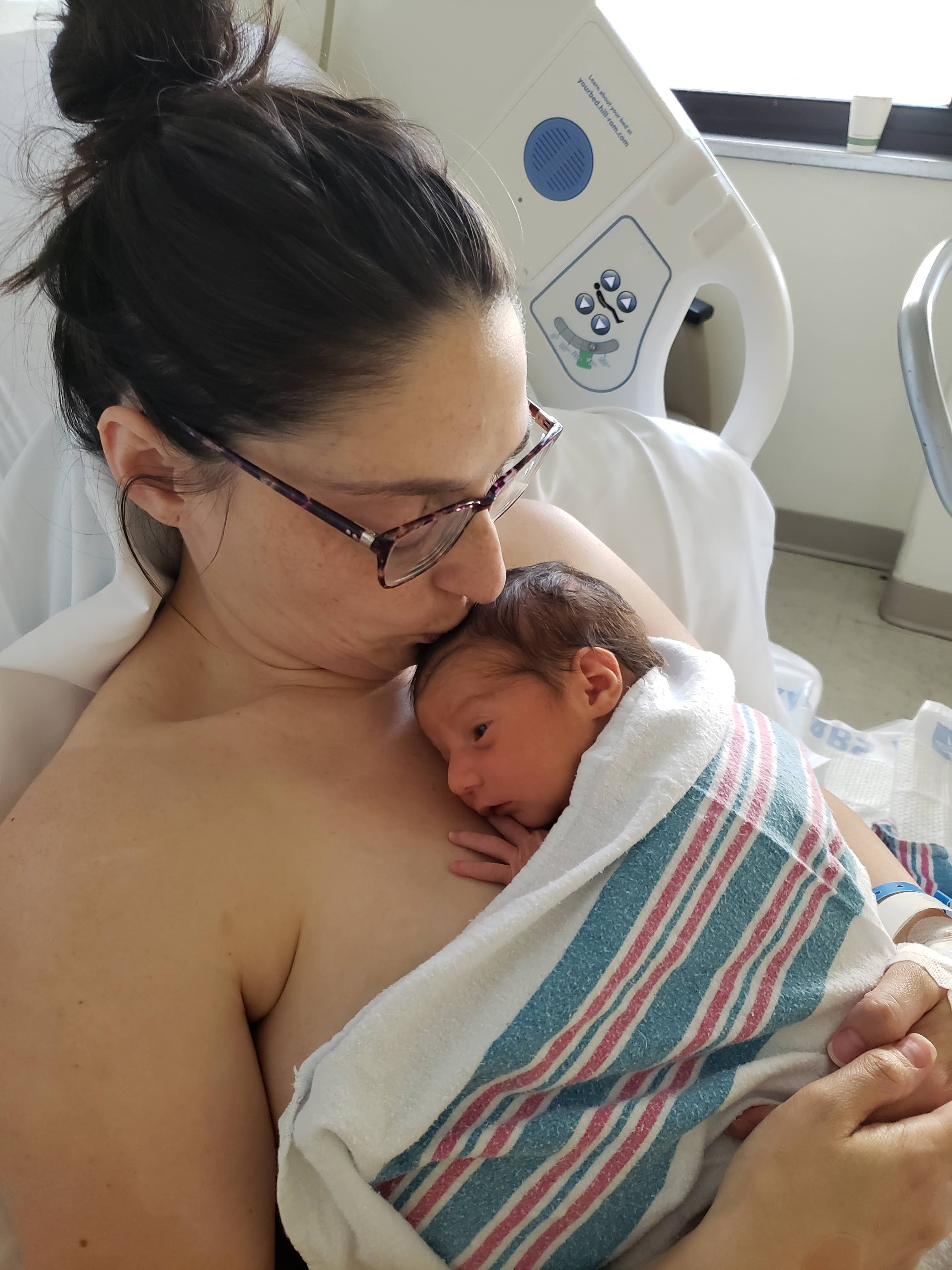 “They were ready to discharge me, and I was nervous about going home given what happened to Ilana… my blood pressure had been rising a little at each reading and I was worried,” said Samantha. “I told my nurse to check my blood pressure again. She was dismissive, tried to talk me down, told me they would send me home with instructions about my blood pressure and what to do. But I wouldn’t budge. I was armed with the knowledge of what happened to Ilana. I made her check it again. When she finally did, things changed quickly. Just like Ilana, my blood pressure had gone up to a concerning number. She told me to lie down and called the doctor. The nurse returned with some medication - I took it, and tried to get some sleep. Moments later, the doctor (the same who’d delivered me) burst in to the room and said she was putting me on magnesium.”
“They were ready to discharge me, and I was nervous about going home given what happened to Ilana… my blood pressure had been rising a little at each reading and I was worried,” said Samantha. “I told my nurse to check my blood pressure again. She was dismissive, tried to talk me down, told me they would send me home with instructions about my blood pressure and what to do. But I wouldn’t budge. I was armed with the knowledge of what happened to Ilana. I made her check it again. When she finally did, things changed quickly. Just like Ilana, my blood pressure had gone up to a concerning number. She told me to lie down and called the doctor. The nurse returned with some medication - I took it, and tried to get some sleep. Moments later, the doctor (the same who’d delivered me) burst in to the room and said she was putting me on magnesium.”
Samantha’s husband Matt got on the phone with Ilana to figure out what dosage of medications worked for her to bring her postpartum preeclampsia under control. Despite Matt trying to advocate for what worked for her twin sister, Samantha’s providers continued to try various dosages. After two days, they figured out what worked for her: it was milligram for milligram the exact combination of medications that got Ilana’s blood pressure under control.
Both Samantha and Ilana went home reunited with their babies, but they both remain on blood pressure medication to this day.
“It’s not easy to advocate for yourself, and that’s ok to admit,” said Ilana. “So my advice to other patients is this: prepare for your visits, write your questions down and bring them with you, and keep asking them until you get the answers you feel you need and that you deserve. Keep talking, and then talk some more.”
Two years later, Ilana is still on blood pressure medication, even though she is avid exerciser, a health eater, and a non-smoker.
“Something in my body changed after preeclampsia despite my healthy lifestyle and body weight,” said Ilana. “It makes my commitment to my health even more important to me – it’s my responsibility to care for myself so I can make the most of my life and be the best mother I can be.”
Samantha agreed, and added an important point: “I was induced on the day I was because when I went to get the jug for my 24 hour urine test, I insisted I wasn’t feeling well and that I needed to be seen by the Ob. Looking back, I feel aghast that my provider was willing to wait over the weekend to do the test, even after he’d urgently called me back to the office to do a second blood pressure check… So, when your body is insisting that you are not well, you insist, insist, insist at the nurses and doctors. Stand your ground.”
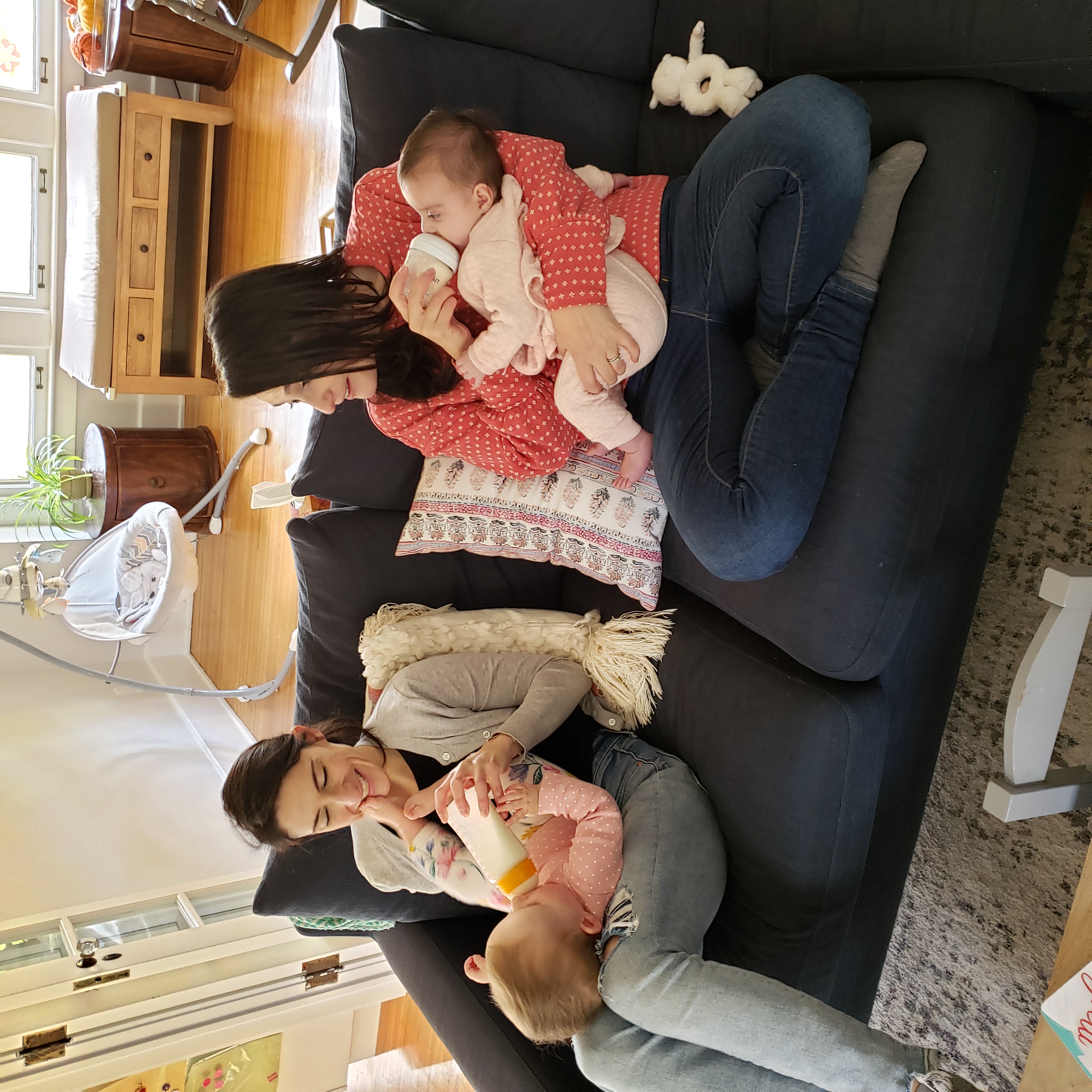
The twin sisters love being moms to their girls, but like most survivors, the idea of future pregnancies remain uncertain because of preeclampsia. They share their story with the Preeclampsia Foundation community in the hopes that others take charge of their health and feel empowered to speak up when something feels off.
To learn more about postpartum preeclampsia, visit www.stillatrisk.org and help share the signs and symptoms to let women know that "delivery is NOT the cure" for preeclampsia.
Read Ilana’s full preeclampsia story here.
Read Samantha’s full preeclampsia story here.
Related Articles

A visual approach to understand preeclampsia patient experiences from the Society for Maternal-Fetal Medicine & Preeclampsia Foundation

GAP—SPIRIN campaign gets low-dose aspirin to those most at risk to help close the maternal health gap in preeclampsia ________ NEW YORK, January 23, 2025/PRNewswire/ – In recognition of...

Recently, I came across a social media post calling attention to the global maternal health crisis from a Black woman’s perspective. Someone responded to the post asking, “What’s rac...
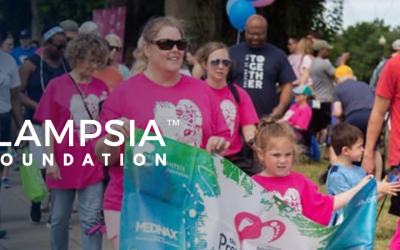
August 22, 2023 – Melbourne, FL –– Preeclampsia survivors and their supporters will hit the pavement with a purpose on Saturday, August 26, as part of the fourth annual Promise Walk...

As an advocate who served on the planning committee for the Foundation’s Chicago Promise Walk and 5K Run for numerous years and currently serves on the Patient Advisory Council, Jasmine Mago is...

As a preeclampsia survivor in our PF community, you are probably well-aware that you have a higher risk for various forms of heart disease than our “normal” pregnancy peers. As one survivo...
